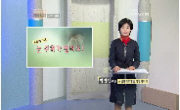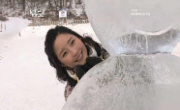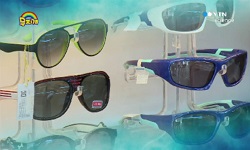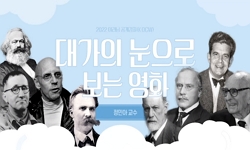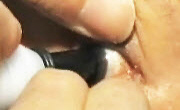Memoirs of the Blind, which encompasses Derrida’s profound thought and impressive visualization of blindness, eyes/tears and faith, depicts his self-portrait of deconstruction through the language of confession and love. For Derrida, the “proper...
http://chineseinput.net/에서 pinyin(병음)방식으로 중국어를 변환할 수 있습니다.
변환된 중국어를 복사하여 사용하시면 됩니다.
- 中文 을 입력하시려면 zhongwen을 입력하시고 space를누르시면됩니다.
- 北京 을 입력하시려면 beijing을 입력하시고 space를 누르시면 됩니다.

해체론의 눈(Eyes)과 자화상 = The Eyes and Self-Portrait of Deconstruction: On Blindness, Seeing/Tears and Faith
한글로보기https://www.riss.kr/link?id=A76449623
- 저자
- 발행기관
- 학술지명
- 권호사항
-
발행연도
2008
-
작성언어
-
-
주제어
데리다 ; 해체 ; 눈 ; 눈먼 자들에 대한 기억 ; 자화상 ; 잔해 ; 눈멂 ; 봄과 눈물 ; 믿음 ; Derrida. deconstruction ; eyes ; Memoirs of the Blind ; self-portrait ; ruins ; blindness ; seeing/tears ; faith
-
KDC
840
-
등재정보
KCI등재
-
자료형태
학술저널
- 발행기관 URL
-
수록면
31-54(24쪽)
- 제공처
-
0
상세조회 -
0
다운로드
부가정보
다국어 초록 (Multilingual Abstract)
Memoirs of the Blind, which encompasses Derrida’s profound thought and impressive visualization of blindness, eyes/tears and faith, depicts his self-portrait of deconstruction through the language of confession and love.
For Derrida, the “proper” I/self of deconstruction can only be expressed as an event in the act of writing or painting the moment that I encounter the alterity of the Other which “exists before I am” and cannot be assimilated into my own frame. In this context, ruins, the trace of différance which embodies the alterity traversing the self, becomes the core of his self-portrait and autobiography in the sense of deconstruction.
By commenting on several visual arts of the blind in Louvre Museum, Derrida attempts to theorize his thought concerning blindness that is grounded in the question of ruins and self-portrait. Blindness here does not
refer to an infirmity or impotence, but to a transcendental condition of tears welling up in him in the encounter with the incoming of the Other. Based on the experience of blindness, Derrida provides a new mode of eyes shedding tears in which one, with hospitality, can truly welcome the incoming of the Other as a gift. Drawing on Andrew Marvell’s beautiful phrases “tears that see and eyes that shed tears,” Derrida embodies the
(in)visible images of the eyes and the tears of deconstruction, in which seeing and tears complete each other by supplementing the rupture of the other.
Indeed, Memoirs of the Blind can be called “Derrida’s own self-portrait,” an expression of his passionate faith for the eyes of deconstruction, which is gracefully expressed in the form of impressive visual images and incisive critical thinking. The important point here is that Derridean faith, grounded in his masterful blending of the passion of religious thinking with the logic of “perhaps,” is strongly informed by the ethics of opening and affirmation, as opposed to the bigoted faith of religious and political dogma. It is only
through these newly-born eyes and the open faith that deconstruction can become the creative principle of concrete and diverse ethical and aesthetical practices.
목차 (Table of Contents)
- I. 들어가며
- II. 해체론에 대한 편견과 진실
- III. 자화상과 잔해: 눈멂과 눈물
- IV. 앤드류 마블의 눈: 봄과 눈물 그리고 고백의 문제
- V. 나가며: 해체론적 믿음이란?
- I. 들어가며
- II. 해체론에 대한 편견과 진실
- III. 자화상과 잔해: 눈멂과 눈물
- IV. 앤드류 마블의 눈: 봄과 눈물 그리고 고백의 문제
- V. 나가며: 해체론적 믿음이란?
- 인용 문헌
- Abstract
동일학술지(권/호) 다른 논문
-
- 한국비평이론학회
- 서길완(Gilwan Seoh)
- 2008
- KCI등재
-
- 한국비평이론학회
- 김용수(Yongsoo Kim)
- 2008
- KCI등재
-
- 한국비평이론학회
- 최영진(Youngjeen Choe)
- 2008
- KCI등재
-
- 한국비평이론학회
- 권석우(Seokwoo Kwon)
- 2008
- KCI등재




 스콜라
스콜라